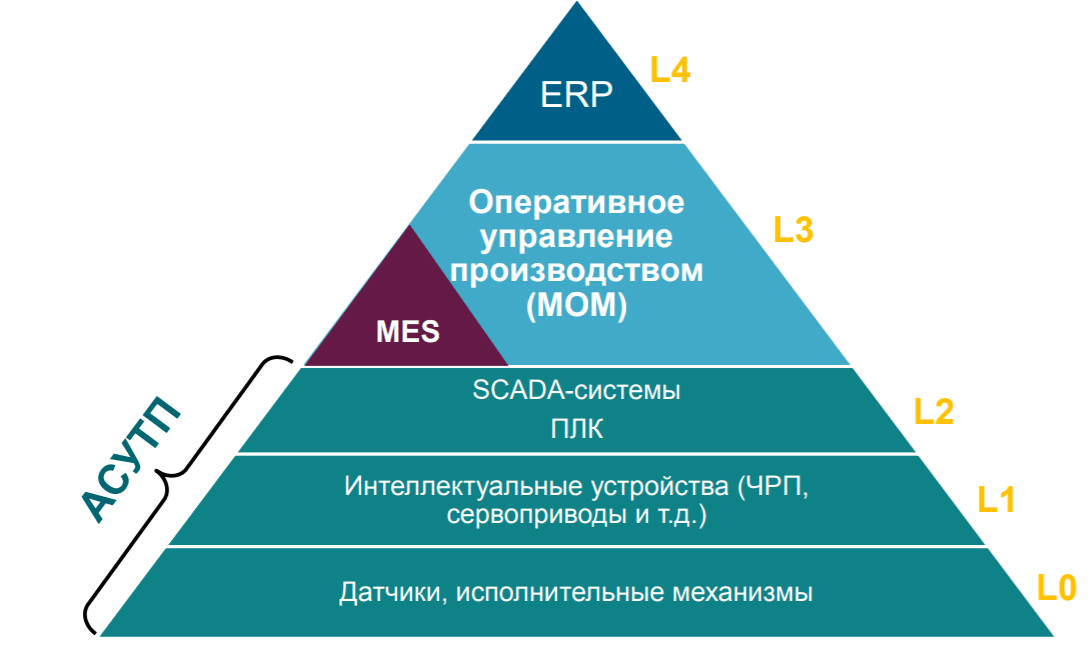Введение
- Знакомство с понятием автоматизации в бизнесе
- Значение правильного выбора уровня автоматизации
Уровень 1: ручное управление
На уровне ручного управления бизнес-процессы выполняются вручную с минимальным использованием автоматизированных систем. Сотрудники выполняют большую часть операций, используя традиционные методы, такие как бумажные документы, телефонные звонки и электронную почту. В этом режиме отсутствует или ограничен минимум автоматизированных инструментов.
Advantages
- Простота внедрения: на этом уровне нет необходимости в сложных технологических решениях или дорогостоящем оборудовании.
- Гибкость: ручное управление позволяет быстро адаптироваться к изменениям и требованиям бизнеса.
- Низкие затраты: отсутствие необходимости в автоматизации снижает начальные затраты.
Недостатки
- Низкая производительность: Ручное выполнение процессов обычно занимает больше времени и подвержено человеческим ошибкам.
- Ограниченные возможности масштабирования: При росте бизнеса ручное управление может стать неэффективным и трудно масштабируемым.
- Риски безопасности: Отсутствие автоматизированных систем может повысить уровень рисков, связанных с ошибками и утечкой данных.
Как определить, что этот уровень подходит вашей компании
- Малый объем операций: если ваша компания в настоящее время выполняет ограниченное количество бизнес-процессов, ручное управление может быть приемлемым вариантом.
- Ограниченный бюджет: если ваша компания ограничена в финансовых ресурсах и не может позволить себе внедрение дорогостоящих автоматизированных систем, ручное управление может быть временным решением.
- Низкая потребность в оперативности: если ваш бизнес не требует быстрой обработки данных и оперативных решений, ручное управление может быть приемлемым вариантом.
Однако, важно помнить, что ручное управление может быть временным решением, и при дальнейшем росте компании может потребоваться переход на более высокий уровень автоматизации для обеспечения эффективности и конкурентоспособности.
Уровень 2: основы автоматизации
На уровне основ автоматизации компания начинает внедрять базовые автоматизированные системы и инструменты для оптимизации бизнес-процессов. Это может включать в себя использование простых программных приложений, электронных таблиц, баз данных или онлайн-инструментов для управления задачами и проектами.

Advantages
- Увеличение производительности: автоматизированные системы помогают сократить время выполнения задач и улучшить общую производительность.
- Улучшение точности: автоматизация уменьшает вероятность человеческих ошибок и повышает точность выполнения задач.
- Лучшая организация данных: базовые автоматизированные системы позволяют более эффективно управлять и хранить данные, что упрощает доступ к информации.
Недостатки
- Ограниченные возможности: базовые автоматизированные системы могут быть ограничены в функциональности и не всегда способны полностью удовлетворить потребности компании.
- Необходимость в обучении персонала: внедрение новых систем требует времени и ресурсов на обучение сотрудников.
- Дополнительные затраты: внедрение даже базовых автоматизированных систем может потребовать дополнительных финансовых затрат на приобретение и обновление программного обеспечения.
Как определить, что этот уровень подходит вашей компании
- Рост бизнеса: если ваша компания начинает расти и требует более эффективных способов управления бизнес-процессами, основы автоматизации могут быть полезным следующим шагом.
- Повышение эффективности: если ваша компания сталкивается с проблемами эффективности в выполнении повседневных задач, автоматизация может помочь улучшить ситуацию.
- Увеличение объема данных: если ваша компания работает с большим объемом данных, автоматизация может помочь в их более эффективном управлении и анализе.
Уровень основ автоматизации часто является первым шагом к созданию более эффективной и конкурентоспособной бизнес-модели.
Уровень 3: частичная автоматизация
Частичная автоматизация представляет собой более продвинутый уровень, чем основы автоматизации, и включает в себя более сложные системы и процессы. На этом уровне компания использует автоматизированные системы для оптимизации ключевых аспектов бизнеса, таких как управление производством, складскими запасами, финансами, маркетингом или продажами. Это может включать в себя использование специализированных программных продуктов или интеграцию нескольких систем для автоматизации целого ряда процессов.

Advantages
- Улучшенная эффективность: частичная автоматизация помогает оптимизировать бизнес-процессы, ускоряя выполнение задач и снижая количество ошибок.
- Больше возможностей: более сложные системы автоматизации позволяют компании внедрять новые стратегии и методы работы для улучшения результатов.
- Улучшенный анализ данных: автоматизированные системы могут обеспечить более глубокий анализ данных, что позволяет компании принимать более обоснованные решения.
Недостатки
- Высокие затраты: частичная автоматизация может потребовать значительных инвестиций в приобретение и настройку специализированных программных продуктов или оборудования.
- Сложность внедрения: внедрение сложных систем автоматизации может быть сложным и требовать длительного времени на обучение персонала и настройку систем.
- Необходимость в поддержке: поддержка и обновление автоматизированных систем также могут потребовать дополнительных ресурсов и усилий.
Как определить, что этот уровень подходит вашей компании
- Необходимость в оптимизации ключевых процессов: если ваша компания сталкивается с проблемами в управлении ключевыми аспектами бизнеса, частичная автоматизация может помочь улучшить ситуацию.
- Планы роста: если ваша компания планирует расширять свою деятельность или увеличивать объемы производства, частичная автоматизация может обеспечить необходимую инфраструктуру для реализации этих планов.
- Необходимость в более глубоком анализе данных: если ваша компания стремится получить более детальное понимание своей деятельности и клиентской базы, частичная автоматизация может помочь в этом.
Уровень 4: полная автоматизация с контролем человека
На этом уровне компания полностью автоматизирует большинство ключевых бизнес-процессов, однако сохраняет контроль и возможность вмешательства со стороны человека при необходимости. Все основные операции выполняются автоматически с использованием специализированных программных систем, роботов или машинного обучения, но человек остается в качестве контрольного элемента, который может принимать решения и вмешиваться в процесс в случае нештатных ситуаций или необходимости анализа и принятия стратегических решений.

Advantages
- Высокая эффективность: полная автоматизация позволяет компании достичь максимальной производительности и оптимизировать бизнес-процессы за счет автоматического выполнения основных операций.
- Меньше человеческих ошибок: автоматизированные системы могут снизить вероятность ошибок, связанных с человеческим фактором, что улучшает качество и надежность работы.
- Более быстрые реакции: системы автоматизации позволяют компании быстрее реагировать на изменения на рынке или внутренние факторы благодаря автоматическому анализу и обработке данных.
Недостатки
- Высокие затраты на внедрение: полная автоматизация может потребовать значительных инвестиций в приобретение специализированных технологий и обучение персонала.
- Риск потери контроля: слишком сильная автоматизация может привести к потере контроля над бизнес-процессами, если не будет обеспечено достаточное управление и контроль со стороны человека.
- Сложность внедрения изменений: изменение автоматизированных процессов может быть сложным и требовать времени и ресурсов на их перенастройку и обновление.
Как определить, что этот уровень подходит вашей компании
- Необходимость в максимальной эффективности: если ваша компания стремится к максимальной производительности и оптимизации бизнес-процессов, полная автоматизация может быть правильным выбором.
- Высокая степень автоматизации процессов: если большинство ключевых операций в вашей компании уже автоматизированы на предыдущих уровнях, полная автоматизация может быть логическим шагом для дальнейшего улучшения производительности.
- Необходимость в гибкости и контроле: если ваша компания хочет сохранить возможность вмешательства человека в бизнес-процессы для принятия стратегических решений или в случае нештатных ситуаций, полная автоматизация с контролем человека может быть подходящим вариантом.
Уровень 5: полная автоматизация без человеческого вмешательства
На уровне полной автоматизации без человеческого вмешательства компания полностью переходит на использование автоматизированных систем, которые могут самостоятельно выполнять все ключевые бизнес-процессы без необходимости участия человека. Это включает в себя использование передовых технологий, таких как искусственный интеллект, машинное обучение, автономные роботы и другие автоматизированные системы, способные анализировать данные, принимать решения и действовать в соответствии с заданными алгоритмами.
Advantages
- Максимальная производительность: автоматизированные системы могут работать круглосуточно без перерывов, обеспечивая максимальную эффективность и производительность.
- Снижение затрат: уменьшение или исключение человеческого труда позволяет сократить затраты на оплату труда и снизить риск человеческих ошибок.
- Быстрая реакция на изменения: автоматизированные системы могут быстро адаптироваться к изменениям на рынке или внутренней среде компании и принимать соответствующие решения.
Недостатки
- Высокие затраты на внедрение: полная автоматизация без человеческого вмешательства может потребовать значительных инвестиций в разработку и внедрение передовых технологий.
- Ограничения технологий: некоторые бизнес-процессы могут быть сложны для автоматизации без участия человека из-за ограничений существующих технологий.
- Риск потери контроля: полная автоматизация может привести к потере контроля над бизнес-процессами, если не будет обеспечено достаточное управление и мониторинг со стороны человека.
Как определить, что этот уровень подходит вашей компании
- Высокая степень автоматизации процессов: если большинство бизнес-процессов вашей компании уже автоматизированы на более низких уровнях, полная автоматизация без человеческого вмешательства может быть логическим следующим шагом для достижения максимальной эффективности.
- Необходимость в масштабируемости: если ваша компания стремится к масштабированию своей деятельности без увеличения численности персонала, полная автоматизация может помочь достичь этой цели.
- Необходимость в минимизации рисков: если ваша компания работает в отрасли, где человеческие ошибки могут иметь серьезные последствия, полная автоматизация может помочь снизить риск и повысить надежность бизнес-процессов.
Conclusion
Выбор оптимального уровня автоматизации для вашей компании является ключевым шагом на пути к повышению эффективности, снижению затрат и улучшению качества работы. Понимание особенностей каждого из пяти уровней автоматизации поможет вам принять обоснованное решение, соответствующее потребностям и целям вашего бизнеса.
На уровне ручного управления вы можете начать, если ваша компания только начинает свою деятельность или имеет ограниченные ресурсы для внедрения автоматизации. Однако, по мере роста бизнеса и увеличения объема операций, вы можете переходить к более продвинутым уровням автоматизации.
При принятии решения об уровне автоматизации учитывайте следующие факторы
- Цели бизнеса: объективно оцените, какой уровень автоматизации наилучшим образом соответствует вашим стратегическим целям и позволит достичь желаемых результатов.
- Потребности клиентов: учитывайте потребности и ожидания ваших клиентов при выборе уровня автоматизации. Автоматизация должна улучшить качество обслуживания и удовлетворить потребности вашей аудитории.
- Ресурсы и бюджет: оцените ваши текущие ресурсы и финансовые возможности для внедрения автоматизации. Убедитесь, что выбранный уровень автоматизации соответствует вашему бюджету и возможностям.
- Гибкость и масштабируемость: выберите уровень автоматизации, который обеспечит гибкость и возможность масштабирования вашего бизнеса в будущем, учитывая возможные изменения условий рынка и потребностей клиентов.
Независимо от выбранного уровня автоматизации, важно помнить, что процесс автоматизации не должен быть статичным. Постоянно оценивайте эффективность внедренных систем и готовы адаптировать их в соответствии с изменяющимися условиями и потребностями вашего бизнеса.
Принятие обоснованного решения относительно уровня автоматизации поможет вашей компании улучшить конкурентоспособность, повысить эффективность и обеспечить долгосрочный успех в переменчивом мире бизнеса.
Уровни основ и частичной автоматизации могут быть идеальным выбором для компаний, которые стремятся оптимизировать свои бизнес-процессы, повысить эффективность и гибко реагировать на изменения на рынке.
Полная автоматизация с контролем человека может быть правильным выбором для компаний, которые стремятся к максимальной эффективности, сохраняя при этом возможность вмешательства человека для принятия стратегических решений или в случае нештатных ситуаций.
И, наконец, полная автоматизация без человеческого вмешательства может быть идеальным вариантом для компаний, которые стремятся к максимальной производительности и автоматизации всех ключевых бизнес-процессов.
Важно помнить, что выбор уровня автоматизации должен быть обоснованным и соответствовать специфике вашего бизнеса, его потребностям и целям. Кроме того, автоматизация — это непрерывный процесс, и ваша компания может переходить на более высокие уровни по мере развития и изменения условий рынка.




